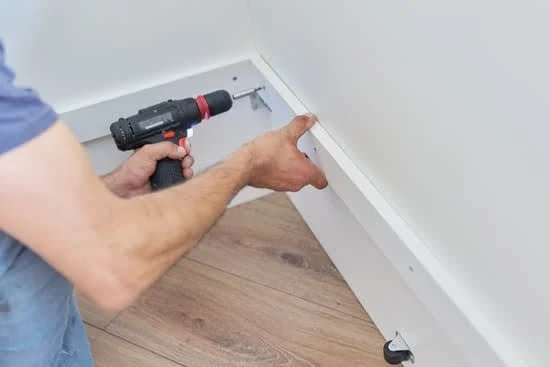Introduction to Joints for Woodworking
Joints for woodworking are two or more pieces of wood that are connected together to form a structural connection with superior strength. Joining techniques vary and the benefits of different types of joints will depend on the type.
Some of the main benefits that jointing brings to woodworking projects include increased strength, improved stability and durability, resistance to moisture and high temperature, higher level of craftsmanship due to additional detailing and good aesthetics as a result.
The 6 common types of jointing used in woodworking are: simple lap joint; dovetail joint; mortise & tenon joint; dowel joinery; biscuit joinery and tongue & groove joinery. The type of joinery used in any particular project depends on the design, functionality and load placed upon it. In addition to these basic types, other more complex joints can be used depending on the requirements of the project such as miter joints, pocket joinery and box joints.
To use any kind of joint successfully involves selection of appropriate tools, materials and techniques specific to each type based on experience, research and experimentation over time. In general terms this includes measuring accurately using rulers/tape measures, cutting carefully using saws or routers as appropriate. For certain types gluing may also be necessary after clamping etc depending upon what is being made as well as fitted with screws for final assembly or protective finishes applied where necessary.
Every project requires you to have an understanding what your desired result is before starting out by taking into account factors like measuring accurately, selecting suitable tools & materials etc which ultimately help determine success in completing the task at hand with excellent results in aesthetic appeal as well as increased strength & durability too!
Types of Joints for Woodworking
Types of Joints for Woodworking :
Miter Joint – A miter joint is a type of joint which consists of two pieces of wood that are cut at an angle and then joined together. This type of joint is commonly used in picture frames, window frames, and door frames.
Half-Lap Joint – A half-lap joint consists of two pieces of wood that have been cut halfway through their thickness and then glued together. It is a very strong joint, typically used to join large pieces such as the side rails on shelving units or cabinets.
Butt Joint – A butt joint is the simplest type of woodworking joint composed of end grains butting up against one another. This type of joint is not very strong and should only be used if necessary.
Dado Joint – Dado joints are a type of joinery where a groove is made in a piece of wood, usually using a router or saw blade, to accept a second piece of lumber at right angles. This type of joinery works best when joining two pieces together that have different widths and depths.
Dovetail Joint – Dovetail joints are considered one of the strongest joints for woodworking because they create interlocking fingers between two pieces instead of relying solely on glue for strength. They can be seen most often on fine furniture and cabinets and require an experienced craftsman to create them accurately.
Benefits and Drawbacks of Using Joints in Woodworking
Joints are an essential part of woodworking. The primary benefit of using joints in woodworking is that they provide structure and stability to the pieces being worked on. Joints can also help avoid splitting or breaking of the piece due to added pressure or weight. Furthermore, joints also serve as decorative accents by adding an artistic flair to your project.
However, there are some drawbacks to using joints too. They require accuracy and precision when installing and may be difficult to cut properly depending on the type of joint chosen. Additionally, many types of joints require additional tools, specialized skills, and a lot of patience in order for them to be installed effectively. Lastly, glue can sometimes cause staining and discoloration if not applied carefully which could ruin the finished product.
Essential Tools and Supplies Needed for Woodworking Joints
In woodworking, there are a variety of different joint types that need specific tools and supplies in order to create professional-looking pieces. Depending on the type of joint, some of the essential tools and supplies needed to create them include:
• Clamps: Clamps are an essential tool for securing two or more parts together while applying glue or assembling the joint. During assembly and installation, clamps are used to hold the parts being joined together in place while you work.
• A Variety Of Saw Blades: Different saw blades will be needed depending on the type of joint you are creating. Hand saws, miter saws, jig saws and table saws can all be used to accurately cut each part of a joint.
• Drill Bits And Router Bits: Depending on your project, drill bits and router bits can help you achieve perfect cuts or holes that make repeatable joints possible. By using router templates it is possible to make tenons or dovetails with ease.
• Glue And Hot-Melt Adhesives: Adhesive is essential for strong and durable joints. Whether you choose to use traditional wood glue or hot-melt adhesives in liquid form, they should always be allowed to cure before stacking glued pieces of wood onto one another or sanding them down in order to prevent weak bonding points from forming.
• Sandpaper And Brush Sanders: You will need both sandpaper and power tools such as belt sanders and disc sanders in order to smooth any rough edges, level out the gaps between individual pieces of wood and provide a finished look for your joints.
Key Techniques to Follow When Creating Woodworking Joints
Before beginning to create woodworking joints, it is important for a person to prepare the pieces of material that will be used. The surface should be sanded smooth using fine-grit sandpaper. Any irregularities or rough spots should be removed before proceeding to the actual installation. In addition, if any knots are present in the material, they should be drilled out with a countersink bit.
Next, it is important to pay attention to measurements when creating woodworking joints. Take into account not only the length of each piece but also its width so that the joint fits tightly and there are no gaps or spaces visible when held together. It may also be necessary to use precise measuring tools such as a miter saw and ruler if more accuracy is needed.
Finally, when creating woodworking joints make sure that you use the appropriate type of glue that adheres properly between two surfaces and then apply it evenly across both pieces following directions closely. Afterward allow time for the glue to dry completely before connecting one piece with another making sure that they remain in alignment throughout assembly.
Troubleshooting Tips for When Joints Don’t Come Out Right
When joints don’t come out right during woodworking, the most important thing to remember is to go back and analyze why it didn’t work. Start by making sure that you’re using the correct tools and techniques for whatever joint you’re attempting. If there are gaps or cracks in the joint, examine each of your original cuts. Are they accurate with respect to depth and angle? Were any tools adjusted too far during the cutting process? Consider marking a perpendicular line across the end of each piece to use as a reference point when cutting.
Another factor that can contribute to poor joints is varying stock thickness between pieces. You should make sure that each piece of wood is cut from the same plank or board so that all pieces are uniform in thickness; if this isn’t possible, try centering your joint on both thicker and thinner pieces so that one side is never too thin for adequate support. Utilizing clamps can help keep everything together when cutting as well as when driving nails or screws. Finally, try not to exert pressure on a chisel going both ways at once; this will most likely result in an inaccurate cut.
Examples of Quality Projects Featuring Woodworking Joints
Woodworking joints are an incredibly versatile and important part of any woodworking project. Joints can make the difference between a stable structure and a flimsy one, so it pays to be knowledgeable in their construction and maintenance. Quality projects featuring woodworking joints are abundant. They range from bookshelves to decking, window frames to hardwood floors.
One example of a quality project that utilizes woodworking joints is the production of custom cabinetry. A variety of joint techniques such as dovetails, mortise-and-tenon, dowelling and biscuit joinery, can be used together to create cabinetry that not only looks amazing but stands up to wear and tear while providing superior stability. With the inclusion of specialized corner pieces, pieces in hidden compartments or specialty hardware like hinges, latches or straps will provide further protection while making the cabinet look polished and professional.
Another excellent example of a quality project featuring woodworking joints is the construction of a wooden bridge. Various types of joints must be used together to ensure structural integrity since bridges need to carry heavy loads such as cars, pedestrians and other animals on both land and water. Framing nails, screws, bolts, lag screws and glue all play an important role in strengthening bridges made from wood components which must take into account expansion caused by temperature changes or tightening due to increased pressure from traffic over time.
Conclusion
Joints for woodworking can offer a number of advantages, from strength and stability to quality of completion. They are often used to keep two different pieces of material connected and hold them in place without any loosening or slipping. By utilizing a variety of joints, you can create sturdy projects with high-quality outcomes. With this in mind, it is essential that you understand the various types of joints available for use in your woodworking project, as well as how they work, so that you can choose the best ones for your needs and goals.
Woodworking joints provide several benefits that make them an ideal choice for many projects. First, they are extremely strong due to their interlocking nature between adjacent pieces of material; this offers superior holding power and prevents the possibility of loosening over time. Furthermore, because each joint has been designed at a specific angle and size, they will ensure a near-perfect finish on your project; this makes it easier to align materials accurately while creating pieces with uniformity in appearance and structure. Finally, proper utilization of woodworking joints can greatly reduce the amount of time needed for assembly. Instead of individually connecting each piece with screws or adhesives”which requires electric tools”you’ll simply need to line up materials accurately at the required angle before securely clamping them together using a single joint connection point.
In summary, utilizing woodworking joints when crafting projects provides multiple advantages such as strength and stability to quality of completion. These reliable connections enhance accuracy during construction while expediting build times by reducing steps involved in companying components with fasteners or zclips alone. Ultimately then these specialized angles allow for maximum structural security without sacrificing aesthetically pleasing designs via flush finishes detailing overall look alike professional output more akin detailed carpentry results whilst the range in shape reinforces specific assembly variations aligning multiple supportive fixtures capable general repairs easy refurbishments minimal destruction reusing old scraps parts etc

Hi everyone! I’m a woodworker and blogger, and this is my woodworking blog. In my blog, I share tips and tricks for woodworkers of all skill levels, as well as project ideas that you can try yourself.





